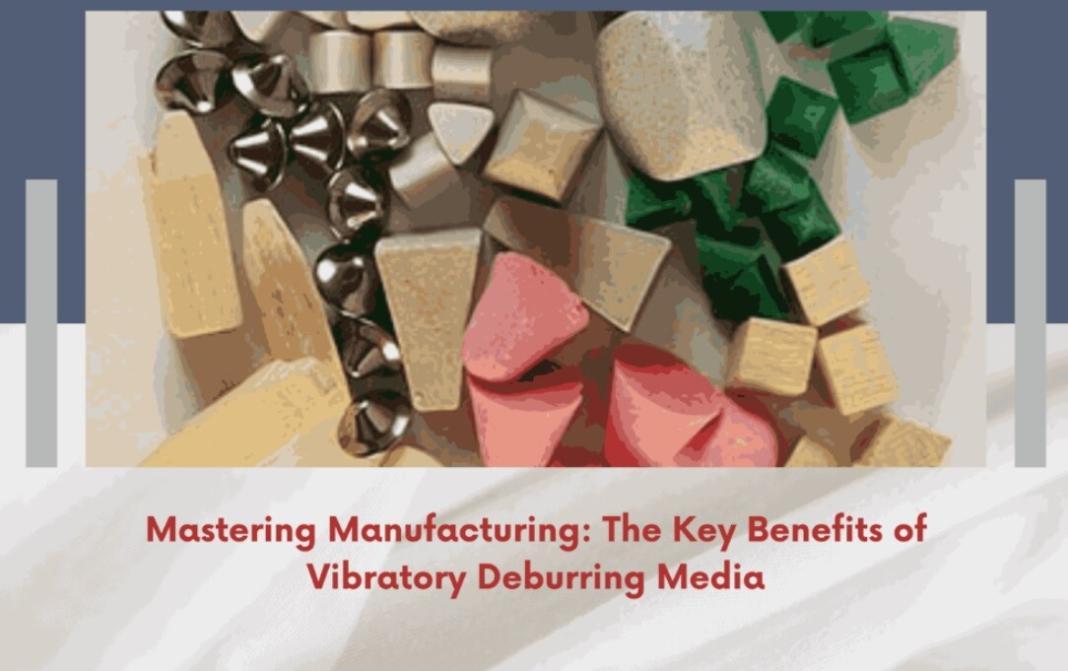In the manufacturing world, the quest for perfection never ends. Achieving a smooth, flawless finish on components is vital for both functional and aesthetic reasons. One of the most effective techniques for refining these parts is vibratory deburring. Central to this process is vibratory deburring media. As a guest contributor with extensive experience in the field, I am eager to explore the importance, types, and benefits of vibratory deburring media in manufacturing.
What is Vibratory Deburring Media?
Vibratory deburring media consists of abrasive materials used in vibratory finishing machines to smooth and polish parts. These media are available in various shapes, sizes, and compositions, each designed to meet specific deburring needs. The correct choice of media can greatly influence the efficiency and quality of the deburring process.
Types of Vibratory Deburring Media
- Ceramic Media: Known for its durability and versatility, ceramic media is ideal for heavy-duty deburring. It comes in various shapes like cylinders, triangles, and cones, which allow it to reach difficult areas. Ceramic media is particularly effective on hard metals like steel and aluminum.
- Plastic Media: Softer and lighter than ceramic, plastic media is suitable for finishing softer metals and plastics. It minimizes the risk of damaging delicate parts and is often used for applications requiring a pre-paint or pre-plate finish.
- Steel Media: Mainly used for burnishing rather than deburring, steel media provides a high-impact, low-abrasion finish. It’s excellent for creating a polished, shiny surface on metal parts, enhancing both appearance and functionality.
- Organic Media: Made from natural materials like corn cob and walnut shells, organic media is used for polishing and light deburring. It is environmentally friendly and leaves a clean, residue-free finish, making it a popular choice for eco-conscious manufacturers.
How Does Vibratory Deburring Media Work?
In a vibratory finishing machine, parts and media are placed together in a vibrating bowl or tub. The machine’s vibrations cause the media to rub continuously against the parts, gradually wearing away imperfections and smoothing the surface. The aggressiveness and quality of the finish depend on the type of media used and the machine’s frequency and amplitude settings.
Choosing the Right Media
Selecting the appropriate vibratory deburring media involves several considerations:
- Material of the Workpiece: The type and hardness of the material being deburred dictate the media choice. Harder materials require more abrasive media like ceramic, while softer materials are better suited for plastic media.
- Desired Finish: The end goal of the finishing process influences media selection. For a smooth, polished surface, organic or steel media may be preferable. For aggressive deburring, ceramic media is more suitable.
- Part Geometry: Complex shapes with intricate features may require specific media shapes to ensure all areas are adequately deburred.
- Process Duration: The available time for the deburring process can affect the media choice. More aggressive media can achieve results faster but may also increase wear on the parts.
Benefits of Vibratory Deburring Media
- Consistency: Vibratory deburring ensures uniform and consistent results, which is essential for maintaining quality standards in mass production.
- Efficiency: This method can process multiple parts simultaneously, significantly improving throughput and reducing labor costs.
- Versatility: With a wide range of media types available, vibratory deburring can be tailored to suit various materials and finishing requirements.
- Surface Enhancement: Beyond deburring, vibratory finishing can enhance surface texture, improve part aesthetics, and prepare parts for subsequent coating or plating processes.
Innovations and Trends
The vibratory deburring media industry is continuously evolving, with innovations aimed at enhancing efficiency, sustainability, and precision. New media formulations are being developed to cater to specific industrial requirements, such as high-energy media that significantly reduce processing times. Furthermore, there is an increasing focus on environmentally friendly alternatives. Manufacturers are increasingly looking towards biodegradable media and recycling methods to minimize waste and reduce environmental impact. These innovations not only contribute to more sustainable practices but also offer cost benefits by extending the lifespan of media and reducing disposal costs.
Maximizing the Benefits
To fully leverage the advantages of vibratory deburring media, it’s essential for manufacturers to regularly monitor and maintain their finishing systems. Regular checks on the condition of the media, such as ensuring it’s not worn out or contaminated, can maintain optimal performance and consistent results. Additionally, understanding the specific needs of each application allows for the customization of media blends, optimizing the balance between aggressive cutting and fine finishing. Collaborating with media suppliers for tailored solutions can further enhance process efficiency and product quality. By staying informed about the latest trends and best practices in vibratory deburring, manufacturers can achieve superior finishes and maintain a competitive edge in the market.
Real-World Applications and Success Stories
Consider a mid-sized aerospace component manufacturer that implemented a tailored vibratory deburring process. By selecting the appropriate ceramic media for their titanium parts, they significantly improved the quality and consistency of their finishes. This change not only enhanced the aesthetic appeal of their components but also ensured compliance with stringent industry standards. Another success story involves a custom jewelry maker who switched to organic media for polishing delicate silver pieces. The result was a cleaner, shinier finish that delighted their customers and reduced production times.
Conclusion
Vibratory deburring media plays a crucial role in the manufacturing process, ensuring parts are finished to precise specifications. By understanding the types of media available and their respective applications, manufacturers can optimize their deburring processes, achieving superior quality and efficiency. Whether working with hard metals or delicate plastics, the right deburring media can make all the difference in the final product. Investing in quality vibratory deburring media is a step towards achieving excellence in manufacturing. As the industry continues to innovate, staying updated on the latest advancements will help manufacturers maintain their competitive edge and meet the ever-evolving demands of the market.
You may also like,







